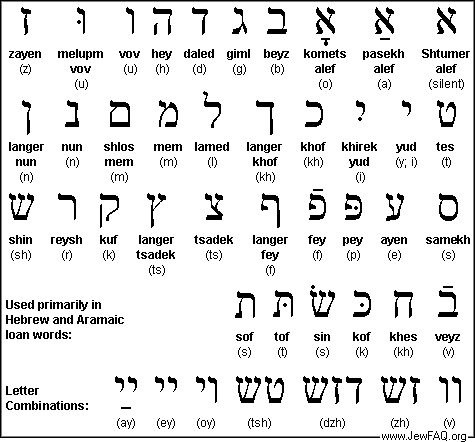http://yiddish.forward.com
And my translation:
When Both Husband and Wife Are Converts
By
 Charlie Hall and Paula Sinclair
Charlie Hall and Paula Sinclair
When someone decides that he wants to convert to Judaism in an Orthodox manner, he must first demonstrate that he has no concealed intentions – for example, that his reason for conversion is that he is in love with a Jewish girl. In fact, Orthodox rabbis make an effort to talk potential converts out of their intentions: the potential converts are advised to find their own way to God through keeping the seven Noahide laws (the heavenly decrees that all humankind must observe) and lead their lives as righteous people.
Rabbi Meir Fond, the founder of the “Flatbush Minyan” in
Most converts marry born Jews, and therefore “buy into” a Jewish family with new Jewish roots. But what about a convert that marries another convert? Is it harder, having no protective net of a family? Is their life any different from a couple where only one is a convert?
Paula Sinclair, a doctor who is an Orthodox Jewish convert from the
Paula grew up in
In college, she tried Christianity, “but the idea that Jesus died for my sins seemed so childish to me, because I feel that one has to be held responsible for one’s own sins.” Through a friend who was a convert, her interest in Judaism blossomed, and in 2001 she completed the conversion.
Charlie also has a Protestant background. As a child, he studied in a Presbyterian Sunday school, but when he grew older, he was disappointed with the liberal atmosphere in the Protestant churches. “It bothered me that they made theological decisions based on the majority. Ignorant worshipers shouldn’t make such decisions.”
Charlie survived several personal crises in his personal life. He married twice – and both times got divorced. Depressed, he once accompanied a friend to a prayer session of the Jewish Renewal movement in
When he got a job at
Charlie maintains that it’s just a coincidence that they are both converts. “I could just have easily married a born religious Jewish girl,” he remarked. “But I couldn’t be with a ba’al teshuva (penitent), because they often aren’t sure where to go. One day they want to be Hasidic, the next day – Carlebach, and the next – Modern Orthodox. Converts are more similar to born Jews because both understand that one needs a rabbi as a guide, and this creates a more stable life.”
Paula and Charlie converted separately, before they met. But sometimes, a non-Jewish couple decides to convert together. For Denis and Isabelle Supersac, a couple in France that decided to convert, the process was so long and bitter, it’s nearly a miracle that they held out. You would think that a married couple would have less trouble going to a rabbi, because it’s clear that they aren’t converting to marry a Jew. But not this time – their process dragged on for eleven years.
One possibility is that the rabbis in
 Denis and Isabelle Supersac and four of their five children
Denis and Isabelle Supersac and four of their five children
Denis, a translator, hails from a Protestant family, and Isabelle was a secular Catholic language instructor when they engaged in a long discussion about religion, specifically Judaism. “That discussion was a landmark in my spiritual journey,” remarked Denis. “I had long wrestled with the question of why there are two versions of Christianity – Protestantism and Catholicism – if they both believe in Jesus. It just didn’t make any sense.” Isabelle had also begun to dabble in various religions, and like Denis, became very interested in the Jewish faith.
“But when we wanted to learn more, we could only take classes with a liberal non-Orthodox rabbi, because the Orthodox rabbis wouldn’t let us in,” said Denis. He started learning Hebrew, Chumash, and Torah law on his own. By then, they already had one child, and lived in
“At about that time, we began to observe Judaism,” tells Denis. “We bought kosher meat in
After that, the family blossomed, and in 2004, when they already had five children, Rabbi Moshe Chen, the Chabad rabbi in Toulouse, finally agreed to learn with them privately, and they signed up for the general conversion class. “The teacher was a twenty-year-old girl – I already knew more than she did,” recalls Denis. Then, the beis-din gave them a written exam of 280 questions and required them to write a lengthy article; Denis’ totaled 80 pages. But when the couple was asked whether they could take the oral part of the test (the last stage of learning), they answered: “Not yet.”
“We were furious,” said Isabelle. “We already had a visa to travel to
Denis and Isabelle protested that they could not wait three months, because they had to move to
The Forverts unsuccessfully tried to reach the rabbis in
Today, Denis and Isabelle very happily reside in their new Modern Orthodox home in
“We still don’t understand why it took 11 years for us to convert, just because we couldn’t find a rabbi willing to help us,” sighed Denis. “Our children kept asking us: ‘Are we Jews yet?’ It shouldn’t be like that.”


